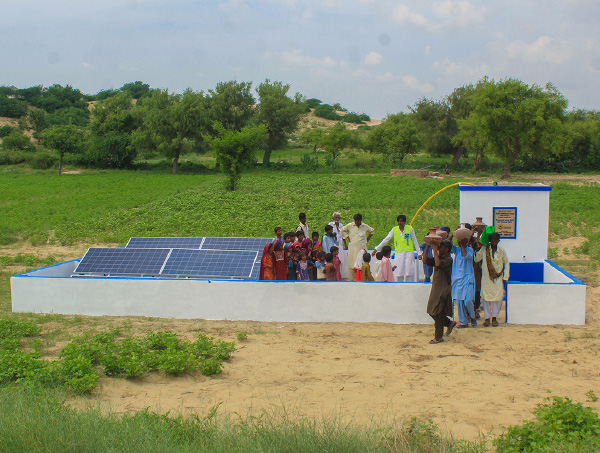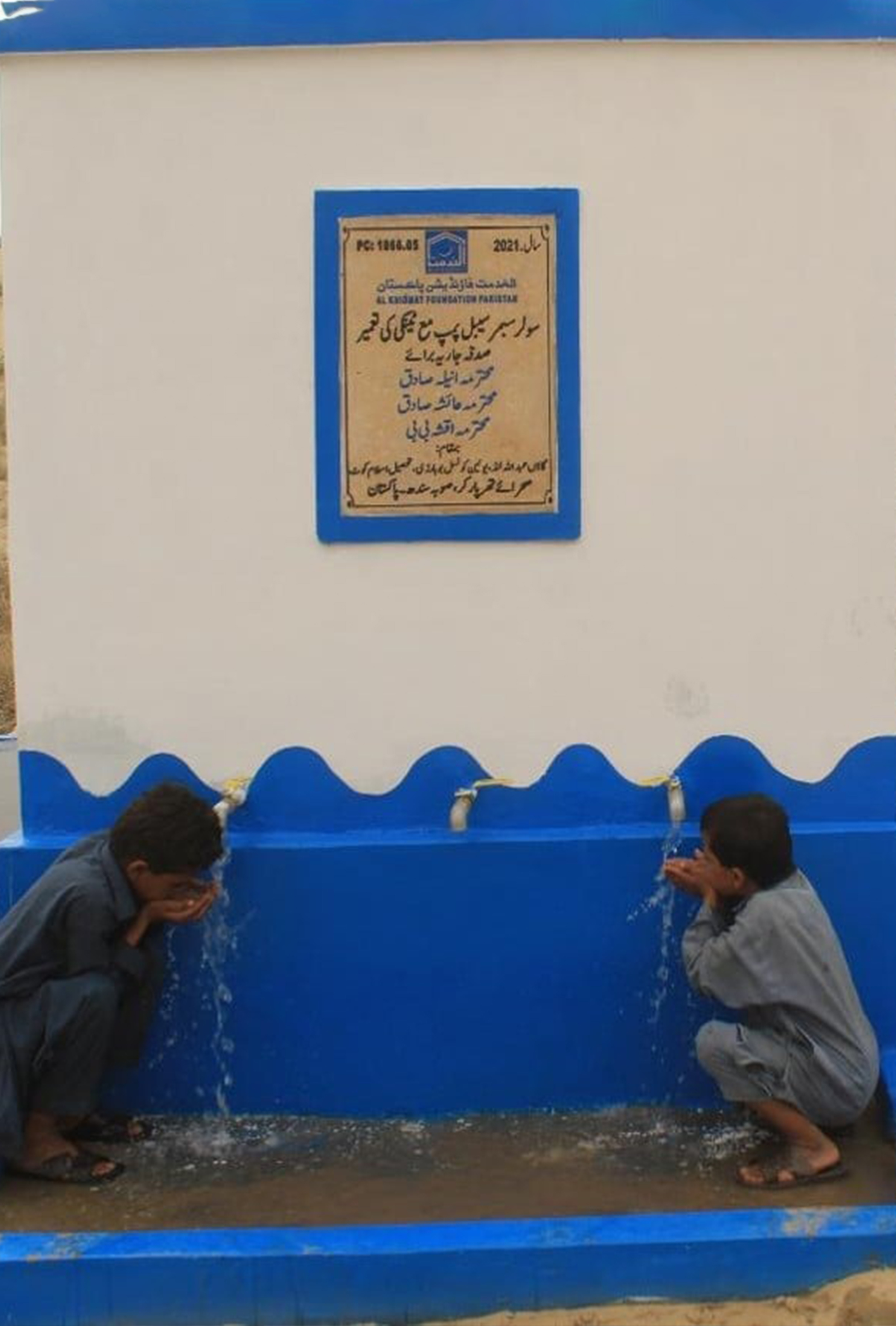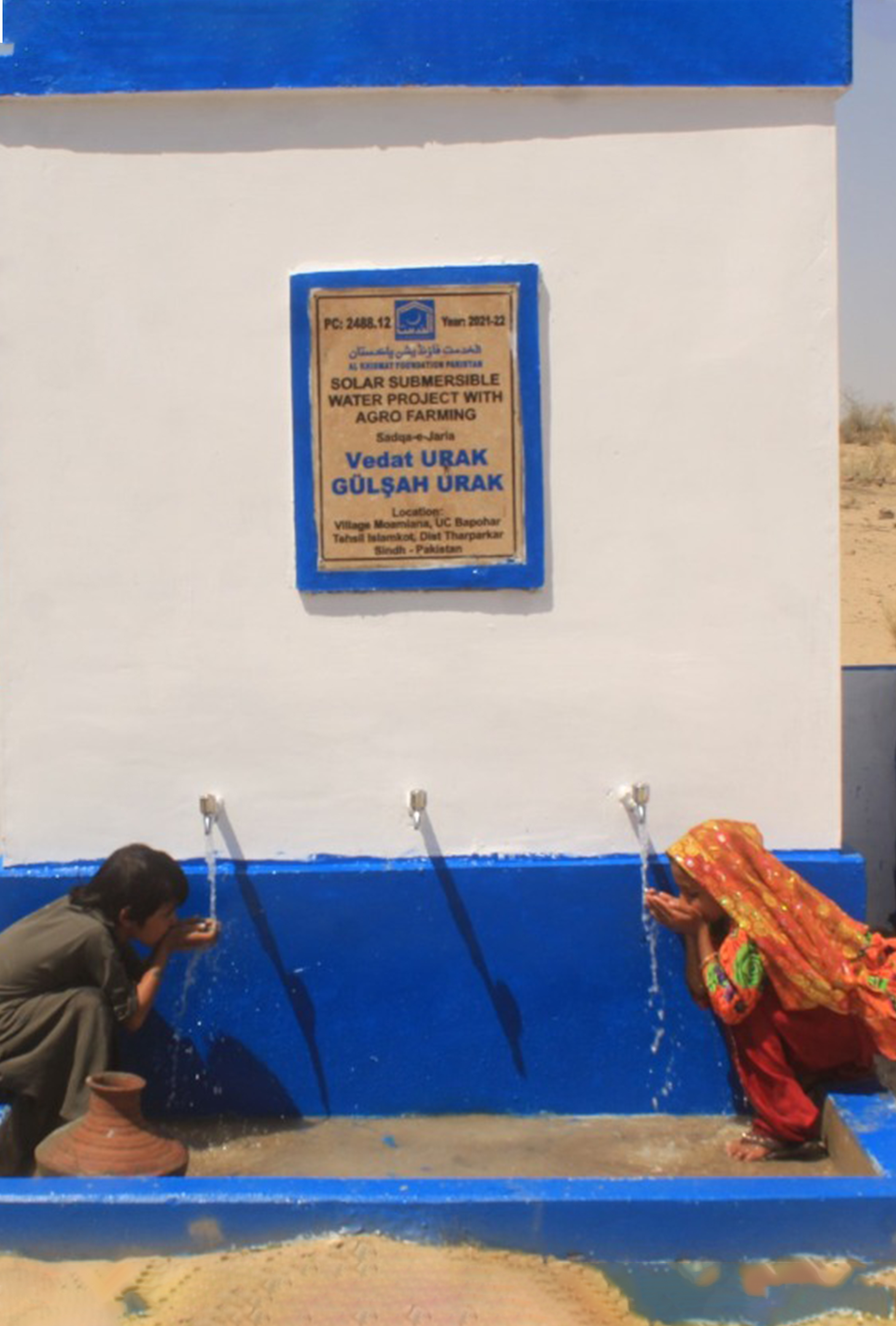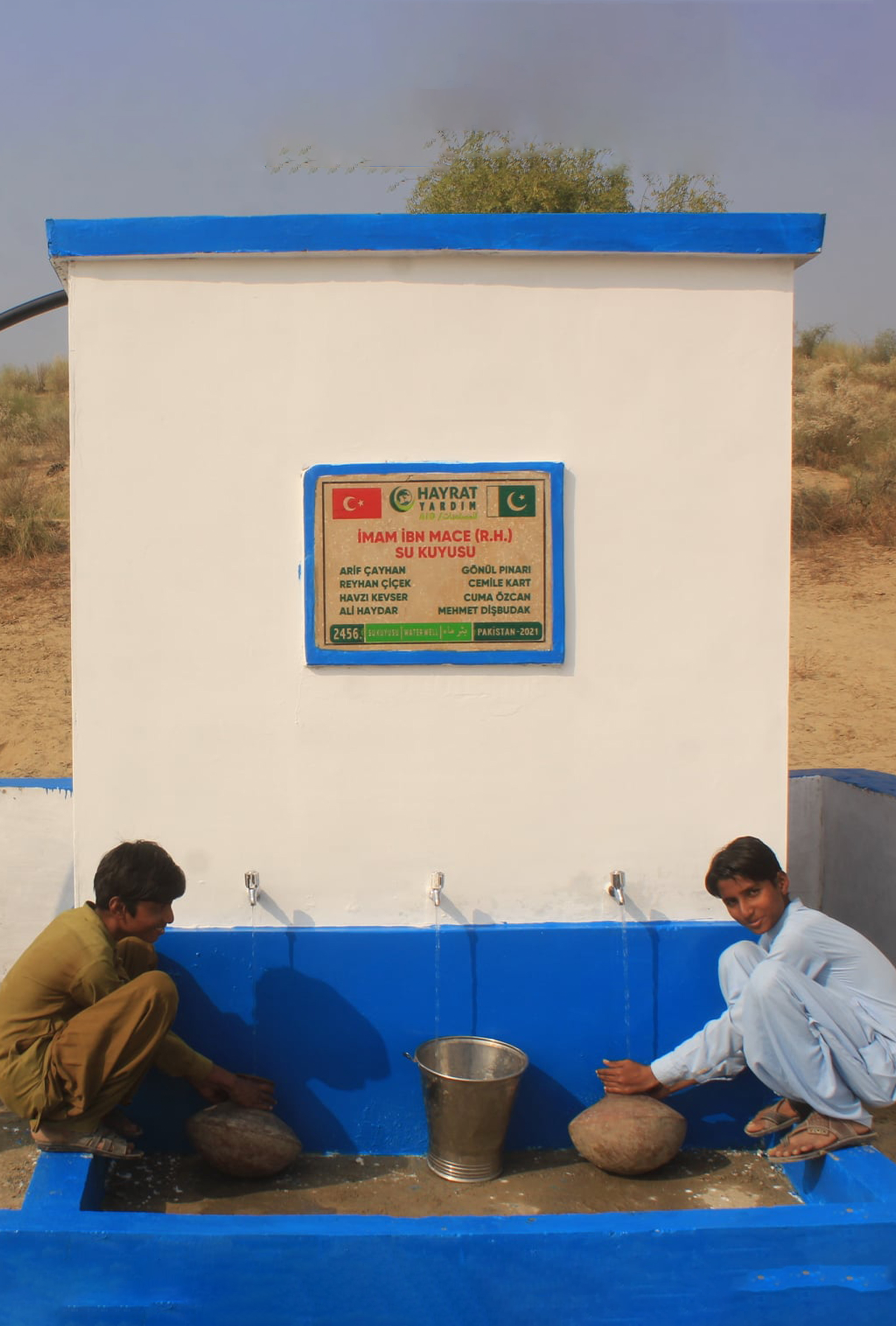Our Services

About Solar Submersible Pump
What is Alkhidmat Solar Submersible Pump?
A submersible water pump operates beneath the earth's surface. Submersible Water Pump pushes water to the surface. Most submersible pumps are long cylinders that are about 3 to 5 inches' diameter and 2 to 4 feet long. Submersible Water Pumps have a hermetically sealed motor that is close-coupled to the body of the water pump. Having a hermetically sealed motor prevents the water from getting inside the pump's motor and causing a short circuit. Other components of a submersible water pump are the cable, which is connected to the motor and a pipe that transports the water to the surface. Water is then stored in water storage tanks constructed nearby Submersible water pump tube well. Submersible Water Pump projects are best suitable to run systems for water pumping in remote areas or where electricity has frequent outage.
Harnessing the power of the sun to deliver water from wells and ponds, even in the most remote areas. Our eco-friendly, cost-effective solution requires minimal maintenance and stands as a sustainable choice for irrigation and beyond.
Alkhidmat WASH Program is one of the seven crucial areas of service provided by Alkhidmat Foundation for the betterment of humanity. We are committed to ensuring clean water accessible to all as well as showing communities the important links between clean water, health, sanitation and good hygiene practices. For this, we are also working with partners, civil society, government stakeholders and the media to spread these messages as widely as possible. The Alkhidmat WASH Program has funded more than 17 thousands projects in six Provinces of Pakistan to help more than 6 million people get access to water, hygiene education and improved sanitation.




